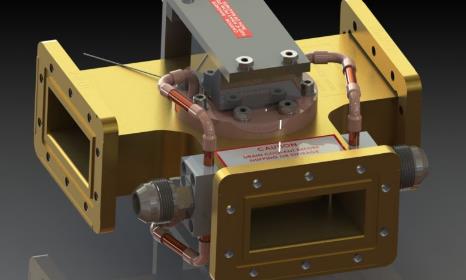How Do Microwave Circulators Improve Signal Routing?
Microwave circulators are pivotal devices in modern RF and microwave systems, playing a critical role in enhancing signal routing. These devices ensure efficient signal transfer between ports in a system while maintaining high isolation and minimizing interference. Their ability to direct signal flow unidirectionally across multiple components makes them indispensable in complex telecommunications, radar, and satellite systems.

Enhanced Directional Signal Control
Unidirectional Flow for Optimal Routing
Microwave circulators are designed to control the direction of signal flow, allowing signals to travel in one direction from one port to the next. This unidirectional flow is crucial for systems where signals must be routed efficiently between sources, transmitters, receivers, and other components without the risk of cross-talk or re-entry that could degrade system performance.
High Isolation to Prevent Signal Leakage
A key feature of microwave circulators is their ability to provide high isolation, typically in the range of 15 to 30 dB, between ports. This isolation prevents signal leakage and ensures that signals entering one port do not interfere with those from another. This characteristic is especially important in systems where multiple signals are processed simultaneously, as it preserves the integrity and purity of each signal.
Applications in Complex Systems
Radar Systems
In radar applications, microwave circulators are used to separate the transmitter and receiver paths. This separation allows a single antenna to be used for both transmitting and receiving signals. The circulator effectively routes the outgoing radar pulses to the antenna and then directs the returned echoes to the receiver, thereby optimizing the radar system's performance and sensitivity.
Telecommunication Networks
Microwave circulators facilitate the routing of signals in telecommunication networks, ensuring that signals from different transmitters are directed to the appropriate receivers or antennas without interference. In cellular base stations, circulators enable the use of the same antenna for both sending and receiving signals from the mobile users, thus simplifying the network architecture and reducing costs.
Satellite Communication
In satellite communication systems, microwave circulators help manage the signal paths between the uplink and downlink antennas and their respective transceivers. This management is crucial for maintaining clear communication links with orbiting satellites, ensuring that signals are accurately routed for both transmission and reception.
Enhanced System Reliability and Efficiency
Protection of Sensitive Components
One of the significant advantages of using microwave circulators is the protection they offer to sensitive components. By directing high-power signals away from sensitive receiver elements, circulators prevent potential damage caused by power overload, thereby enhancing the durability and reliability of the system.
Improved System Design
The use of microwave circulators allows for more compact and efficient system designs. By eliminating the need for separate antennas and additional isolation components, circulators reduce the physical footprint and complexity of systems, leading to cost savings and easier maintenance.
Microwave Circulators revolutionize signal routing in RF and microwave systems by providing efficient, isolated, and directional signal management. Their application across various high-stakes fields like radar, telecommunications, and satellite communications underscores their pivotal role in advancing modern technology infrastructure. By enhancing signal routing, microwave circulators not only improve the performance and efficiency of these systems but also contribute to their overall reliability and scalability.
